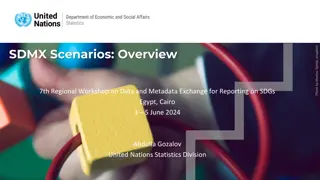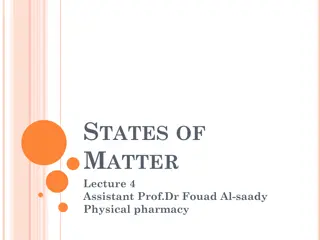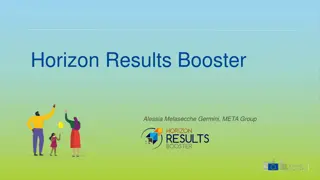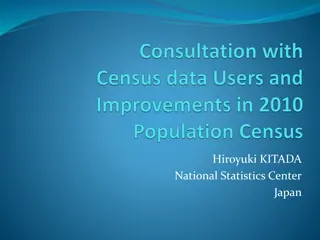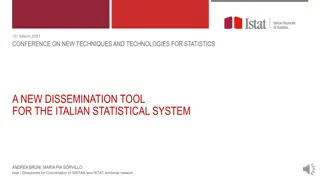
Understanding the Impact of COVID-19 on Early Childhood Education in Sindh
Explore the research findings on the effects of COVID-19 on early childhood education in Sindh, focusing on aspects like children's participation in learning activities, parent-child interactions, and the challenges faced by the education system. Discover key insights and responses during the pandemic for a comprehensive understanding of the situation.
Download Presentation

Please find below an Image/Link to download the presentation.
The content on the website is provided AS IS for your information and personal use only. It may not be sold, licensed, or shared on other websites without obtaining consent from the author. If you encounter any issues during the download, it is possible that the publisher has removed the file from their server.
You are allowed to download the files provided on this website for personal or commercial use, subject to the condition that they are used lawfully. All files are the property of their respective owners.
The content on the website is provided AS IS for your information and personal use only. It may not be sold, licensed, or shared on other websites without obtaining consent from the author.
E N D
Presentation Transcript
Early Learning Partnership Systems Research COVID-19 Research Sindh
Early Childhood Education in Sindh Provision For children ages 3-5 Mostly center-based and formal Public (free, but not compulsory) and private Parental Engagement High interaction with parents for learning at home Low availability of play and learning materials at home Relatively higher degree of negative child discipling Access 45% of children aged 3-5 attending ECE in Sindh (ASER 2019) COVID-19 school closures: Mar-Sep 2020, Dec-Jan 2020, Mar- 2021 ECE generally low-priority in distance learning measures and response efforts
Research Study: Impact of COVID-19 on ECE Assessing short and medium-term effects of the pandemic on early learning systems, especially: Children s participation in learning activities at home Quality of parent-child interactions at home Uptake of distance learning measures Role of teachers in supporting learning at home
Research Design Caregiver/Parent Response (n=1690) Quantitative Head Teacher/ECE teacher (n= 108) Mixed Methods Research Child Desk Review Assessment (n=1819)
ECE Response During COVID-19 ECE not built into initial response efforts by federal government but incorporated later on by provincial government Planning and Implementation Difficulties in data collection. Assessment system is work in progress Obtain Limited information on level/scope of learning during the lockdown through government-backed distance learning initiatives ECE Financing Limited cashflow problems experienced by schools/School Heads Return to School Only 6% of schools/School Heads reporting attendance of more than 75% for period of survey (October-December 2021)
Return to School What percentage of your ECE class attended after school reopening? (n = 108) 45% 39% 39% 40% 35% 30% 25% 20% 16% 15% 10% 6% 5% 0% Less than 25% 26-50% 51-75% More than 75%
Childrens Participation in Learning Activities Caregivers Engagement in Learning Activities in past 15 days (n = 1690) 66% 70% 63% 57% 60% 50% 41% 35% 40% 32% 30% 20% 10% 0% No Yes No Yes No Yes Played with child during last 15 days? Read books or looked at picture books Told stories to child during last 15 days? with child during last 15 days?
Childrens Participation in Learning Activities Caregivers Engagement in Learning Activities in past 15 days Read books or looked at picture books with child during last 15 days? Played with child during last 15 days? Told stories to child during last 15 days? Child s Gender Girl 64% 53% 61% Boy 69% 61% 67% Total 66% 57% 63%
Disability Prevalence by Gender With Disability No Disability 5.3% 94.7% Boy 3.7% 96.3% Girl
Child Learning Outcomes Percentage of Children Correctly Answering Language and Literacy Items 90% 80% 78% 76% 80% 70% 63% 62% 62% 58% 57% 57% 57% 57% 56% 60% 50% 40% 34% 33% 32% 30% 20% 10% 0% Expressive Language Letter Identification Initial Sound Discrimination Listening Comprehension Name Writing Boys Girls Overall
Child Learning Outcomes Percentage of Children Correctly Answering Mathematics Items 80% 71% 69% 67% 70% 66% 64% 62% 61% 61% 59% 57% 60% 56% 55% 50% 40% 30% 20% 10% 0% Verbal Counting Number Identification Number Comparison Simple Addition Boys Girls Overall
Child Learning Outcomes Mean percentage appropriate responses to personal and social development items 70% 61% 58% 60% 56% 49% 48% 48% 50% 40% 30% 20% 10% 0% Perspective-Taking/Empathy Understanding Feelings Boys Girls Overall
Uptake of Distance Learning Measures Comparatively higher participation in low-tech distance learning interventions including printed materials, television, text messages and radio (based on caregiver responses, n= 1690) Did the child access free learning materials in the past 15 days? (n = 1690) 70% 58% 57% 57% 57% 60% 52% 48% 50% 40% 30% 29% 28% 30% 23% 23% 22% 20% 6% 5% 10% 4% 4% 4% 3% 0% Printed materials from school Radio Television Computer without internet Total Computer with internet Smartphone/ Tablet Boy Girl
Uptake of Distance Learning Measures Teacher perceptions: less than half of the school going ECE population utilizing distance learning facilities If you had to guess, what percentage of the students in your class participated in the distance learning activities offered by your school or the government? (n = 90) 70% 64% 60% 50% 40% 30% 22% 20% 8% 10% 6% 0% Less than 25% 26-50% 51-75% More than 75%
Teacher Support in At-home Learning High teacher support (n=90) Support provided to Teachers & Teacher s Support for Children (n = 90) Did you take any extra measures to support preschool children with disabilities while they are not in school during the 32% Did you take measures to support preschool children s protection from abuse and neglect while they are not in school? 68% Did you take measures to support preschool children s psychosocial well-being 68% Were there any preschool children or families you targeted more than others with your support? 53% Did you use strategies to help you get in contact with hard to reach preschool children and their families? 58% Have you received training to support preschool children s well- being? 27% 0% 10% 20% 30% 40% 50% 60% 70% 80%
Key Takeaways Prioritization: The limited prioritization of ECE during the pandemic highlight the need to develop a more coherent, entrenched, and formalized ECE-specific strategies at a systems level that can mitigate the negative impact of emergency situations and ensure high outcomes in other times. Coherence of response: Need for a separate budget head and developing mechanisms for collecting data for early years Learning at home: There is inherent potential in play-based learning. The high prevalence of play-based learning at home with parents, with guidance from teachers, is an opportunity to engage parents further to ensure that the learning environments for children are well-developed at both the class-room and household level.
Key Takeaways Teachers: Despite the challenges faced during the pandemic, evidence of teacher engagement. There is thus scope for further progress in this regard. Equity & Inclusion: Limited access to distance learning during this period. Nevertheless, the participation in distance learning via radio, and printed materials was comparatively high, indicating a sustained effort by the ECE service-providers to keep children engaged. While there is reason for optimism with regards to government s efforts in ECE during the pandemic, there are also challenges. Return to school: Evidence from the data indicates enrolment loss and a significant drop-out ratio, which in turn requires a systems-level response to early learning in the province.
Thank You Thank You


